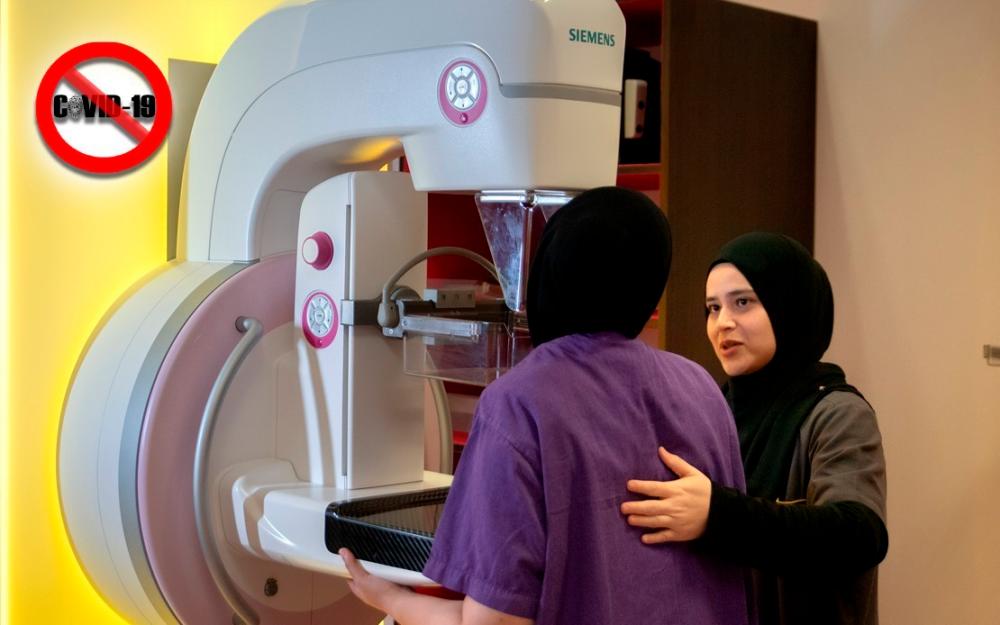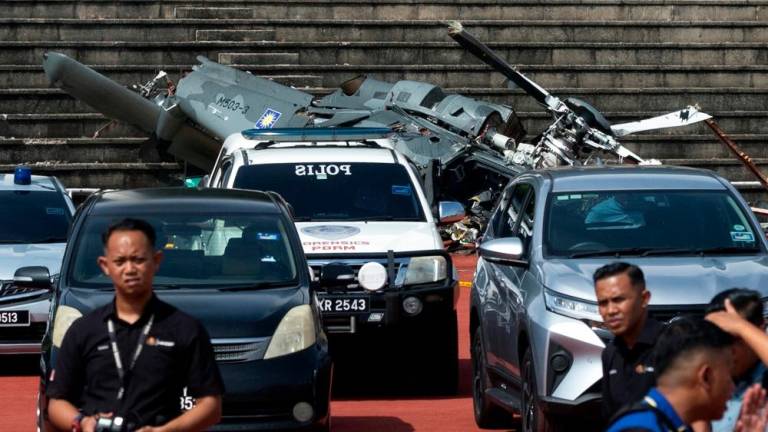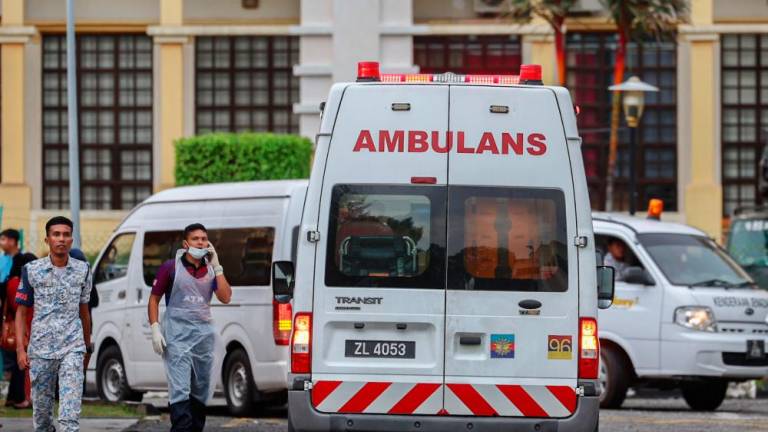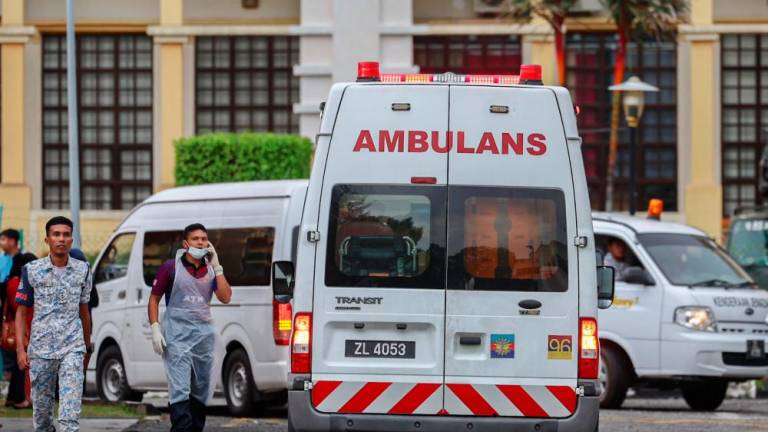KUALA LUMPUR: Human beings are on a daily basis exposed to “background” radiation directly or indirectly via cosmic rays, mobile phones, television, building materials, agricultural produce and even the human body itself.
Radiation is basically energy that is emitted as electromagnetic waves or as moving subatomic particles from a source and travels through space and can penetrate various materials.
While health risks posed by exposure to certain types of radiation are well known, medical science has long proven the benefits of radiation in the field of diagnostic imaging such as radiography, computed tomography (CT), mammography, radiotherapy and nuclear medicine.
The application of radiation is particularly useful for cancer detection and treatment as diagnostic tools allow medical experts to determine the exact location of tumours while treatments such as radiotherapy are used to kill the cancerous cells.
A pertinent issue that arises here is occupational radiation exposure and its health effects on interventional medical workers and to what extent they are protected considering the fact that they handle hundreds of patients every day who have to undergo radiography or CT scans or radiotherapy or fluoroscopic procedures for diagnostic and treatment purposes.
According to radiation protection officer at Hospital Ampang’s Radiology Department Mohammad Azwin Abdul Karim, one of the major challenges faced by the hospital in radiation safety is creating a protected environment for the staff handling radiation equipment.
THREE BASIC PRINCIPLES
Radiation safety, he said, refers to protecting workers from the harmful effects of radiation by taking the necessary measures to reduce unnecessary radiation exposure.
“What concerns us is the scattered radiation that can arise from the rays penetrating the patient’s body, which the staff handling the radiation machine is exposed to,” he said.
Mohammad Azwin said the radiation protection system is in general governed by three basic principles, namely justification, optimisation of protection and dose limit.
He said any practice that can result in increased exposure to radiation must be planned carefully in accordance with the three basic principles.
“Optimisation of protection should be given top priority by ensuring an exposure radiation dose as low as reasonably achievable,” he said.
Reducing the period of time spent near the radiation source, increasing the distance from the radiation source and using appropriate protective gear can indirectly reduce the radiation dose workers are exposed to, he added.
IMPACT OF RADIATION ON STAFF
Although medical workers are not directly exposed to radiation, its effects are known to have a short-term and long-term impact on their health and can affect their quality of life and even that of their offspring.
Mohammad Azwin said the biological effects of radiation can be classified as deterministic and stochastic effects.
Deterministic effects are evident when an individual is exposed to radiation exceeding the threshold point. The higher the dose, the worse the effects suffered by the victim, including cataract, skin injury and hair loss.
Stochastic effects can likely appear irrespective of the amount of radiation dose received by an individual and can lead to cancer and genetic damage.
Mohammad Azwin said many cases of these effects have been reported in medical journals such as TCTMD – an online resource for interventional cardiology – which in a report published in July 2017 presented evidence that routine exposure to radiation in the cardiac catheterisation laboratory can put interventional cardiologists at increased risk for cataracts.
In view of its harmful effects, improvements have been made in terms of radiation protection, including providing radiation workers with personal protective gear made of lead which is a good material for radiation shielding.
“These days the protective gear used (by radiation workers) is becoming more sophisticated. All radiation staff must now wear protective gear such as apron, thyroid shield, lead cap and lead goggles that were invented to protect their bodies from exposure to radiation. But they have to be worn properly in order to be effective,” he said.
He said under Regulation 8 of the Atomic Energy Licensing Regulations (Basic Safety Radiation Protection) 2010, the limit on the effective radiation dose for a worker shall be 20 millisieverts (mSv) in a calendar year.
Mohammad Azwin added that it is also compulsory for the staff to go for periodic health checks to detect any effect of radiation due to workplace exposure.
DIMENSIONS
Medical imaging rooms in hospitals where radiation equipment is installed must also conform to strict guidelines and standards.
Mohammad Azwin said the building structure of the room or space where radiation services are provided in a hospital or health centre has to meet the required minimum standards to minimise the incidence of scattered radiation.
In the rooms where CT scan and angiography services are offered, the thickness of the protective shield covering the walls and doors has to be 2.0 millimetres lead equivalent. The dimensions for the lead glass shielding are 100 centimetres by 50 cm, with a thickness of 2.0 mm lead equivalent.
For the room where mammography services are provided, the thickness of the protective shield for the walls and door must be 1.0 mm lead equivalent.
As for the staff, in order to monitor their level of exposure to radiation, it is compulsory for them to wear personal radiation monitoring devices such as radio photoluminescence dosimeter, optical stimulated luminescence dosimeter and thermoluminescence dosimeter.
Malaysian Nuclear Agency director-general Dr Siti A’iasah Hashim, meanwhile, said it is crucial for them to wear the monitoring device due to the characteristics of the radiation particles as they are invisible, odourless and tasteless.
“The cumulative readings are taken once a month to find out their level of exposure to radiation for that month,” she said.
SAFETY PRECAUTIONS
Siti A’iasah said in Malaysia, the Atomic Energy Licensing Act 1984 provides for strict regulation and control of atomic energy.
The Act also requires workers likely to be exposed to radiation to wear approved personnel-monitoring devices, to keep records of dose and type of radiation the worker is likely to be exposed to, to install or use monitoring devices at the workplace to record the amount of radiation present, and to undergo regular medical examination.
Among Malaysia’s standards for radiation protection are MS838 (2018) – Radiation Protection For Medical Diagnostic X-ray, and MS 2228 (2009) – Structural Shielding Design For Medical X-Ray Imaging Facilities.
“In Malaysia, our radiation safety practices are at a high level and that’s why we rarely hear of any accident involving radiation,” said Siti A’iasah, adding that the authorities, including the Malaysian Nuclear Agency, conduct training on radiation safety regularly.-Bernama













